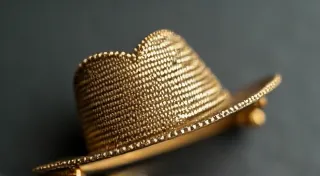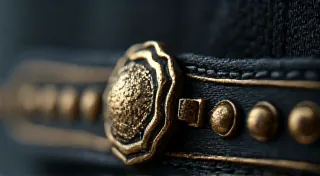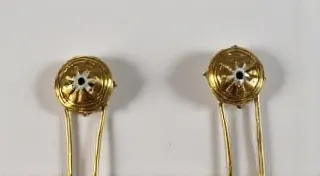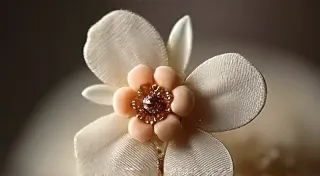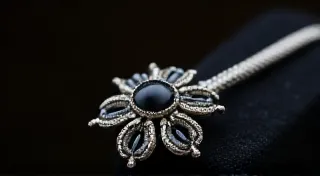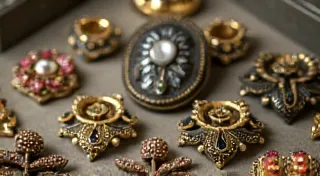The Art Deco Era Hat Pins: Bold Designs and Geometric Shapes
The Art Deco era (roughly 1920-1939) was a period of immense change and innovation, and its influence permeated every aspect of design – from architecture and furniture to fashion and accessories. Hat pins, already a popular accessory in the Victorian and Edwardian eras, underwent a dramatic transformation during this time, embracing the distinctive aesthetic of Art Deco. Understanding these characteristics is crucial for anyone collecting or identifying antique hat pins. Before the vibrant designs of the Art Deco period, hat pins served a practical purpose, evolving alongside social customs – a fascinating journey explored in The History of Hat Pins: From Necessity to Fashion Statement.
Defining Characteristics of Art Deco Hat Pins
Unlike the often-fussy and romantic styles of previous decades, Art Deco hat pins were defined by a clean, streamlined, and often luxurious appearance. Here's a breakdown of key features:
- Geometric Shapes: This is perhaps the most recognizable characteristic. Expect to see triangles, zigzags, chevrons, stepped patterns, sunbursts, and stylized fans. Circles and ovals were also common, but often incorporated into a larger geometric composition.
- Bold Colors & Contrasts: While muted tones were sometimes used, Art Deco hat pins often featured strong color palettes. Black and white combinations were incredibly popular, alongside jewel tones like emerald green, ruby red, sapphire blue, and amethyst purple. Gold and silver accents were frequently used to enhance the luxury.
- Innovative Materials: The era saw experimentation with new materials. While silver, gold, and base metals remained popular, Art Deco hat pins often incorporated Bakelite (an early plastic), enamel (particularly cloisonné enamel), glass (often iridescent or frosted), and occasionally semi-precious stones like onyx or jade. The prevalence of unique materials also built upon the era’s overall shift in design.
- Streamlined Silhouettes: The overall shape of the hat pin tended to be sleek and elongated, reflecting the movement towards modernism. Bulky or ornate designs were largely abandoned.
- Stylized Imagery: Figures and natural elements were often depicted in a highly stylized manner, often reducing them to geometric representations. Think stylized dancers, fans, or geometric flowers.
Popular Motifs & Subjects
Certain motifs were particularly favored during the Art Deco period and frequently appeared on hat pins: The late Victorian era, preceding Art Deco, saw hat pins deeply embedded within social etiquette, as detailed in The Role of Hat Pins in Victorian Social Customs.
- Female Figures: Stylized representations of women, often depicted as dancers, actresses, or flappers, were very common. These figures typically showcased elongated limbs and elegant poses. The shift from the ornate and sentimental Victorian styles to the stylized forms seen in Art Deco represented a broader societal change.
- Architecture & Cityscapes: The skyscrapers and modern buildings of the era inspired hat pin designs. Expect to see stepped patterns and geometric representations of urban structures. This architectural inspiration extended beyond hat pins, influencing art, furniture, and overall design aesthetics of the period.
- Animals: Stylized depictions of animals like panthers, peacocks, and swans were also popular.
- Nature-Inspired Designs: While less overtly romantic than Victorian designs, Art Deco nature motifs often took the form of stylized flowers, leaves, or radiating sunburst patterns. Even the natural world was reinterpreted through a geometric lens during this time.
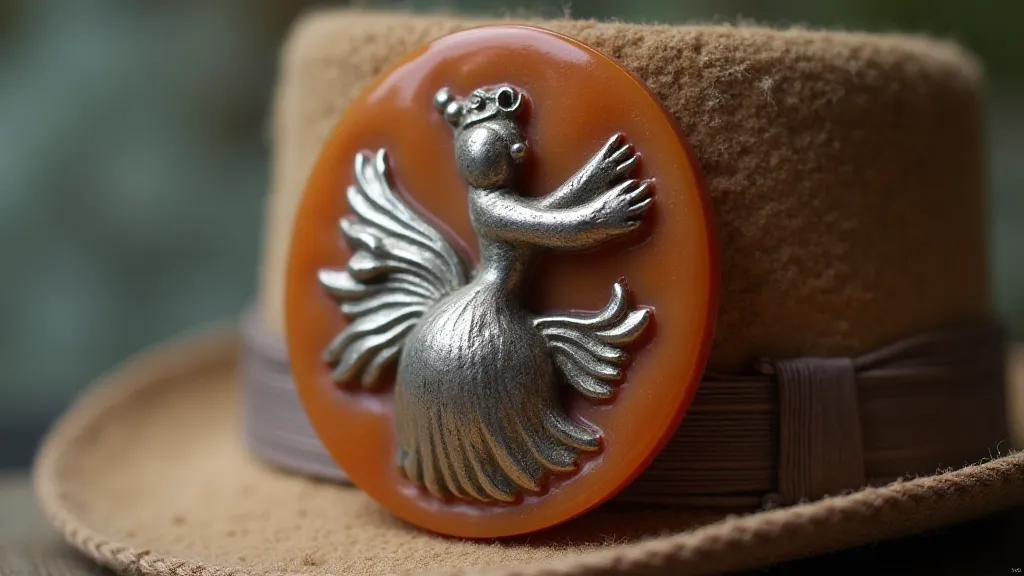
The Influence of Art Nouveau and the Transition to Art Deco
It’s important to note the transition from Art Nouveau, the preceding design movement. While Art Nouveau embraced flowing, organic forms inspired by nature, Art Deco moved towards more rigid geometry and a sense of machine-made precision. The softer, more naturalistic aesthetics of Art Nouveau, like those found in earlier hat pin designs, slowly gave way to the streamlined and geometric shapes characteristic of the Art Deco era. Understanding The Influence of Art Nouveau on Hat Pin Design provides a crucial context for appreciating the innovations of the Art Deco period.
Identifying Authentic Art Deco Hat Pins
While reproductions exist, identifying authentic Art Deco hat pins can be done with careful observation. Recognizing differences between American and European designs also requires a degree of expertise.
- Hallmarks: Look for hallmarks or maker's marks. Silver hallmarks from the 1920s and 1930s will follow the standard marking conventions for the country of origin.
- Material Quality: Authentic pieces often used higher quality materials. Bakelite, in particular, has a distinctive feel and smell.
- Construction: Examine the construction of the pin. The craftsmanship should be precise and detailed.
- Style & Design: Be familiar with the common motifs and design elements of the Art Deco period.
- Origin and Craftsmanship: Differentiating between Identifying American vs. European Antique Hat Pins can also provide clues regarding authenticity and value. Subtle variations in style and materials are often indicative of the hat pin’s origin.
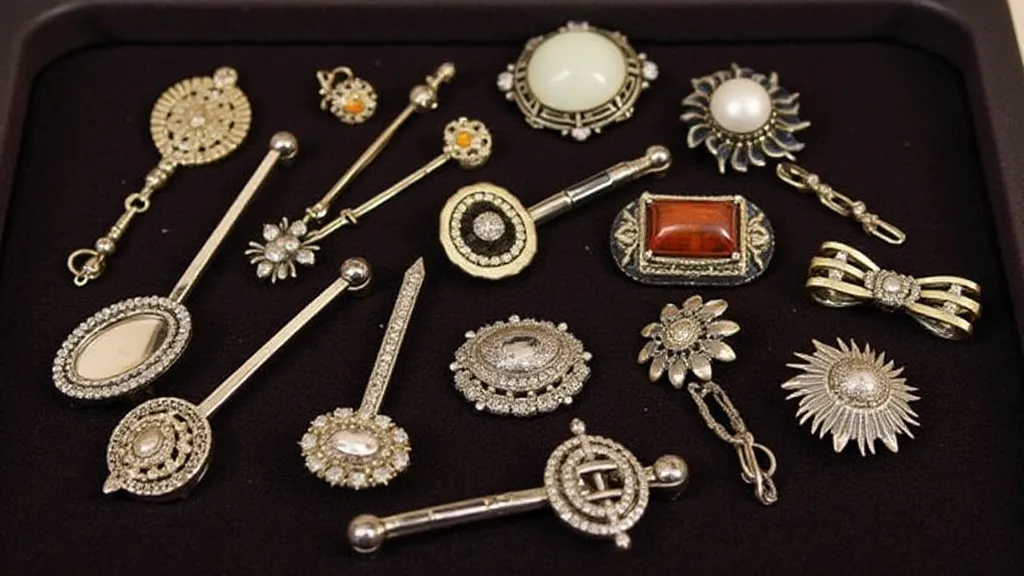
Collecting and Caring for Art Deco Hat Pins
Collecting Art Deco hat pins is a rewarding hobby, offering a glimpse into a glamorous and innovative era. However, these delicate objects require careful handling and storage. Here are a few tips:
- Storage: Store your hat pins in individual padded pouches or boxes to prevent scratches and damage. Avoid storing them in direct sunlight or humid environments, as this can degrade the materials.
- Cleaning: Gently clean your hat pins with a soft cloth. Avoid using harsh chemicals or abrasive cleaners.
- Handling: Handle your hat pins with care, avoiding excessive bending or pressure. The delicate nature of the materials makes them susceptible to breakage.
- Research: Continually expand your knowledge of Art Deco design and hat pin history. The more you know, the better equipped you'll be to appreciate and care for your collection.
Conclusion
Art Deco hat pins represent a fascinating intersection of fashion and art. Recognizing their distinctive characteristics not only enhances your appreciation for this iconic era but also allows you to confidently identify and collect these beautiful and historically significant accessories. By paying attention to the geometric shapes, bold colors, innovative materials, and stylistic motifs, you can unravel the captivating story behind each Art Deco hat pin. The evolution of hat pins reflects broader societal changes, and these accessories continue to fascinate and inspire today.
